Adrian Collins's Blog, page 140
April 16, 2022
REVIEW: The Best Thing You Can Steal by Simon R. Green
The Best Thing You Can Steal, by Simon R. Green, is the start of a new series starring a group of thieves and scoundrels set in an urban fantasy world where magic is real. Each group member has a unique set of skills that make them invaluable for the planned heist. Think Ocean’s 11 meets Nightside with a bit of Dresden Files, and you have this new series. It is such fun.
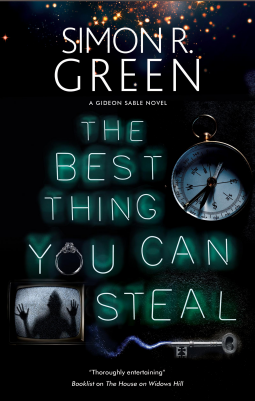 “Welcome to London, but not as you know it. A place where magics and horror run free, wonders and miracles are everyday things, and the dark streets are full of very shadowy people . . .“
“Welcome to London, but not as you know it. A place where magics and horror run free, wonders and miracles are everyday things, and the dark streets are full of very shadowy people . . .“
The story starts with introducing a gentleman scoundrel named Gideon Sable, and no, that is not his real name. He stole this identity like he steals most things, but he now wears this persona like a second skin. He has become the legendary namesake, and all it was to be the master thief, Gideon Sable. And boy, does Gideon he have a heist in mind.
Gideon is the brains of this heist, the cunning rogue who has plans inside plans. More importantly, Gideon is insanely likable. Imagine Danny Ocean but with magic items. I liked him from the first pages of the story, which is a massive credit to Green as an author.
Aside from Gideon, you have his fabulous collection of rogues and malcontents, the Damned, the Ghost, the Wild Card, and Gideon’s ex-girlfriend, Annie Anybody. The Ghost is just that, a ghost. He can move through spaces and is only visible to a select few. The Wild Card is a man who has seen some things that make him a complete wild card. Luck bends and twists in weird ways with him. You really have no idea what will happen in his presence. The Damned is a soul who is cursed. He was asked to steal something unstealable from a celestial being, and in doing so, he became something else. Even shadows slink away from him. He is not a man to be trifled with. The last is Gideon’s former flame, Annie anybody, a woman who can be anyone; luck and perception bend to her. Her powers are a bit hit and miss but interesting.
“And we set of with speed for the bright lights of London. A car full of weird with a ghost on top.”
This book is pure fun. The Best Thing You Can Steal isn’t perfect. The caper wasn’t as convincing as I wished it had been, but I think that takes a solid back seat to the fantastic characters and powers. Again likening it to Ocean’s 11, you didn’t watch Ocean’s 11 for the intricate heist. You watched Ocean’s 11 for the characters coming together in their respective elements and doing some thievery. The Best Thing You Can Steal does this exceptionally well, and it is worth checking out, as is pretty much any of Green’s books. His Welcome to the Nightside books are legend
Check Out The Best Thing You Can Steal By Simon R. GreenThe post REVIEW: The Best Thing You Can Steal by Simon R. Green appeared first on Grimdark Magazine.
April 15, 2022
An Interview With Kel Kade
Last year I got the opportunity to review the first book in The Shroud of the Dark Prophecy series, Fate of the Fallen by author Kel Kade. It consistently remained one of my favorite reads of 2021. Fate of the Fallen seeks to challenge the typical hero journey trope and twist it on its head. The story starts with a simple premise, “What if the chosen one dies in the first few pages?” Kade continues this twisty heroes journey in her newest release, Destiny of the Dead.
 We talked with Kade about The Shroud of the Prophecy series, Aaslo the unlikely and grumpy protagonist, as well as Kade’s writing and what is on the horizon.
We talked with Kade about The Shroud of the Prophecy series, Aaslo the unlikely and grumpy protagonist, as well as Kade’s writing and what is on the horizon.
[GdM] Can you tell us a bit about your writing process? How do you structure your stories? Are you a pantser or plotter? Do you use the post-it note process?
I’m primarily a pantser. I know the major plot points I want to hit at the beginning, but my writing is mostly character-driven. The characters are clearly defined in my mind with all their thoughts and aspirations and faults and ideas, and they make decisions as events unfold that guide the story. I don’t use post-it notes, although I do keep a few notes and character lists in a spreadsheet. Mostly, though, the story and all its threads are held in my mind where I can work and manipulate it with ease.
[GdM] Your worldbuilding and characters read as if they are written by someone who loves to read. Do you read fantasy? If so, have you read anything lately that you loved?
I absolutely love to read, and I especially enjoy fantasy. I like all kinds of fantasy from epic to urban to romance and grim-dark. One of the most intriguing books I’ve read lately was The Gutter Prayer by Gareth Hanrahan. I loved it for its uniqueness and creativity. The concepts and characters were both refreshing and gritty.
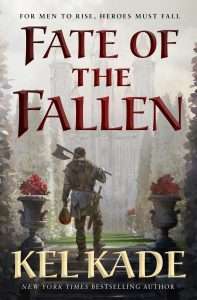 [GdM] You have a background in geoscience. Does your experience help your worldbuilding? If so, how?
[GdM] You have a background in geoscience. Does your experience help your worldbuilding? If so, how?
Geosciences is a field that garners a deep connection with the physical world and all its systems. It collects all the sciences into a picture of completeness that defines that world. I feel that this background inspires me to consider aspects of world-building that might otherwise be overlooked and helps me to understand how all the pieces fit together. Besides the most obvious connections to world-building like rock types, terrain, and geologic hazards, my background in geosciences allows me to think more generally as a scientist who looks for the details, causes and effects, and outliers that make a fantasy world more believable and interesting.
[GdM] You self-published King’s Dark Tidings, while Shroud of the Prophecy is through TOR. What are some of the differences between the process of self-publishing versus through a publisher? Are there any similarities?
There are benefits and drawbacks to both self-publishing and traditional publishing. On the one hand, I have more control over what I do with my self-published books. On the other, I am also responsible for all the tasks that would normally be taken care of for me with a traditional publisher like cover art, editing, marketing, and production. Another interesting point is that the two series have attracted different audiences. While my self-published works tend to appeal to those who enjoy e-books and audiobooks, my traditionally published books draw in those who prefer print. That observation is a bit biased, though, since my King’s Dark Tidings series will be released in print for the first time within the next few months. It’s possible that the audiences aren’t so different, although they do vary in the matter of price. I tend to charge much less for my self-published e-books than a traditional publisher and can do so because I earn a higher royalty rate. Adversely, I am dependent on distribution platforms like Amazon continuing to do business in a way that allows me to earn an income. I prefer not to put all my eggs in one basket, and taking the hybrid approach allows me to diversify my income stream so that I can continue my career as a full-time author.
[GdM] You mentioned in an AMA on Reddit a few years ago regarding writing Rezkin, “Rezkin didn’t give me a choice. I was writing a different series, and this other character kept interrupting my thoughts. The interactions were so funny and exciting that I had to start writing them down. Rezkin is relentless in demanding my attention.” Did the same sort of interrupting of thoughts happen with Aaslo?
Aaslo has a different feel for me than Rezkin. While Rezkin is energy and action and darkly amusing mirth, Aaslo is cool and calm and a bit grumpy. When writing them, it feels a bit like Rezkin is demanding his story exist while Aaslo could not care less. Mathias and Aaslo’s other companions, on the other hand, want Aaslo’s story told, and Aaslo begrudgingly relents.
[GdM] You have the second book of the Shroud of the Prophecy series releasing this month. Can you tell us a bit about where we are in the story?
Destiny of the Dead picks up immediately after the end of Fate of the Fallen. Axus’s initial plans for mass destruction via blight have been foiled; and, consequently, the gods’ interest in Aaslo has been piqued. Not only are the gods confused by Aaslo’s show of power, but so is Aaslo. It’s only natural that the enemy should focus on taking Aaslo down, but while they’re distracted by assassination and impending invasion, a new power rises in the east. Meanwhile, the reaper Myropa is torn between her duty to the gods and her dedication to the world she once abandoned. And Mathias, well, Mathias is just along for the ride.
[GdM] Can you tell us a bit about Aaslo as a character? Where did you get inspiration for him? He occasionally reminds me of a grumpy old man yelling at kids to get off his lawn.
Aaslo is definitely a no-nonsense kind of guy, but he’s also loyal, dedicated, intelligent, and—perhaps more than anything—stubborn. I think his character may have been inspired by my experiences as a geoscientist. I’ve known many geologists, and they’re often the kind of people who immerse themselves in nature and would rather not be bothered by humanity as a whole. Or perhaps he reminds me a bit of myself when I’ve had to get up too early and haven’t had my coffee. Either way, he may not be your first choice for a dinner companion, but he’s definitely someone you want in your corner when worse comes to worse.
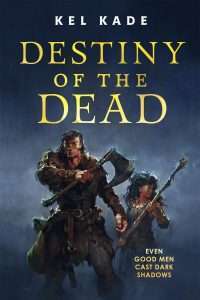 [GdM] The relationship that Aaslo and Mathias have rings with so much sincerity. It has just the right amount of snark for two people who have been life-long friends. How did you get the idea of Aaslo carrying Mathias’s head around in a bag? It certainly adds a fun bit of macabre to the story.
[GdM] The relationship that Aaslo and Mathias have rings with so much sincerity. It has just the right amount of snark for two people who have been life-long friends. How did you get the idea of Aaslo carrying Mathias’s head around in a bag? It certainly adds a fun bit of macabre to the story.
I always knew from the story’s inception that Mathias had to die, but I guess a part of me—like Aaslo—wasn’t ready to let him go. Aaslo needed Mathias and Aldrea needs Aaslo, so it’s only natural the two should remain together. I couldn’t have Aaslo dragging Mathias’s whole body around throughout the story, so naturally let’s just take the head! I remembered as a teenager watching the movie Eight Heads in a Duffel Bag, and I always appreciated the dark—and, yes, macabre—humor of it. I thought, wouldn’t that be an interesting way to carry on Mathias’s torch?
[GdM] I love that you play with the hero’s journey and chosen one trope in the Shroud of the Prophecy series. How fun was it to twist things around?
The hero’s journey is, in my humble opinion, one of the most exciting kinds of stories to read. It’s satisfying to take such a time-honored trope and flip it on its head. To take something that has been so well-written and used time and again and make it new is both rewarding and a lot of fun. Plus, it sets the mood for all the macabre strangeness that follows.
[GdM] Nick Podehl is a beloved audiobook voice actor who has narrated the Shroud of the Prophecy series and your King’s Dark Tidings series. His voice has become synonymous with your characters for audio listeners. First, how did your working relationship with him start? Second, when you write scenes, do you think about how they will sound with his voice acting?
First, I must say that it is absolutely my honor to have Nick Podehl performing my books. I say perform because the word narration just doesn’t seem to cut it. It was my luck that my audiobook publisher for King’s Dark Tidings, Podium Publishing, chose Nick. I had given them an idea of the kind of voice and performance I would like to hear for the series, and they absolutely delivered. When it came time to choose a narrator for Shroud of Prophecy (SOP), I had to consider that a new voice might help distinguish the new series. After much consideration, however, I decided that my listeners were very dedicated to Nick, and I thought that bringing him in for SOP would make everyone happy.
It’s funny that while writing the books I heard the characters in a certain way, but after listening to Nick’s performance, I do often hear them in his voice. Sometimes, as I’m writing dialogue, I hear in my mind how I think they’ll sound in his voice, and that may influence the way I write them.
[GdM] The worlds of King’s Dark Tidings and Shroud of the Prophecy are very distinct. Do you have to do a conscious mental shift when switching between the two worlds?
Because the two worlds are so different, the mental shift between them isn’t too bad. When I mentally travel from one to the next, it’s a bit like going on vacation. That being said, I do have to focus myself for the tone of the books. King’s Dark Tidings feels more like the epic fantasy that it is with many kingdoms and nobles and peasants and mages and warriors, while Shroud of Prophecy is a bit darker and filled with gods and death and creatures, both alive and dead. I have to put myself in certain moods to write with the right feeling.
[GdM] One of the most critical aspects of the Shroud of the Prophecy series, for me as a reader, is the importance of hope. The chosen prophecy comes to a screeching halt very early in Fate of the Fallen, and if there was only one path to salvation, it could have caused despair. Instead, there always seemed to be a glimmer of hope. Is that something that you consciously focused on when writing the story? Or did that develop organically as you got to know the characters and their roles in the world?
I think hope is the natural conclusion of one unifying characteristic possessed by all our heroes in Shroud of Prophecy—the unwillingness to give up. All the heroes, whether they be foresters or thieves or reapers or magi, are afflicted with a stubbornness that drives them to persevere. It’s the nature of the human spirit to require that where there is a will there is a way, and if there is a way, then there is hope. Even in the face of certain failure, if they are unwilling to concede then we can continue to hope for salvation.
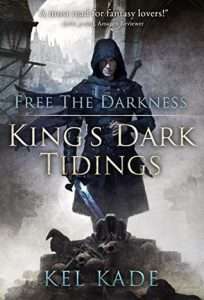 [GdM] As a thought experiment, if Mathias had lived and started his epic prophesized journey, would Aaslo have stayed amongst his trees and his sleepy village? Or do you think he still would have got pulled into all this world-saving business?
[GdM] As a thought experiment, if Mathias had lived and started his epic prophesized journey, would Aaslo have stayed amongst his trees and his sleepy village? Or do you think he still would have got pulled into all this world-saving business?
Oh, Aaslo definitely would have joined Mathias and probably grumped about it the entire way. He had made that decision for himself when he chose to meet Mathias on the road that fateful night when Mathias fell. Aaslo would have taken the backseat with ease and allowed Mathias to take on the mantle of the Chosen One, but he would have said his piece when it came to Mathias’s decisions. There would have been plenty of bickering, but Aaslo would have stayed a true friend and told Mathias the truth no matter how much he disliked it.
[GdM] Now that Destiny of the Dead is releasing, what is next on the horizon?
I’m currently writing the third book in the Shroud of Prophecy series titled Sanctum of the Soul. When I am finished with that, I will take on King’s Dark Tidings Book 6 and a King’s Dark Tidings side tale that is yet unnamed. I’ve also started an unrelated standalone book that I think will be a lot of fun, so hopefully, I will find the time to work on that a bit.
Read Kel Kade’s Books
The post An Interview With Kel Kade appeared first on Grimdark Magazine.
April 14, 2022
REVIEW: Siege of Treboulain by Jed Hearne
Siege of Treboulain takes the best aspects of the old Choose- Your- Own -Adventure books and well-written fantasy novels and smashes them together into an incredibly entertaining game that rewrites itself based on the reader’s choices.
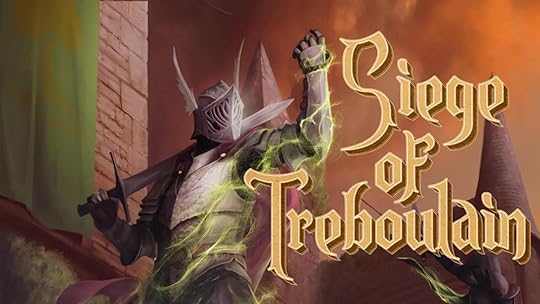 As a fan of both fantasy novels and table-top roleplaying games, Siege of Treboulian was an extremely enjoyable game. Fun and fast-paced, the choices made throughout changed both how the character played progressed and the ending of the story.
As a fan of both fantasy novels and table-top roleplaying games, Siege of Treboulian was an extremely enjoyable game. Fun and fast-paced, the choices made throughout changed both how the character played progressed and the ending of the story.
In Siege of Treboulain, you play as a young ruler of a kingdom, struggling to make a name for yourself and prove that you are a capable leader. You get the opportunity to prove yourself as the city is attacked by a vicious army. The choices you make determine not only your fate, but that of the entire population of the city.
This text-based game allows you to shape the story, choosing different reactions to the storyline as it goes along. Your choice of character, and the way you decide to play the character changes the outcome of the story. As with most games, there are parts that are the same despite the character played or the choices made (for example, there will always be an encounter with a certain unexpected child), but many parts vary wildly, which was surprising and very cool.
The scope of the novel-meets-game was impressive, with political maneuvering, religious upheaval, even a shared background with villains. I also learned something interesting about myself: I am a horrible decision-maker and should never be put in charge. I’m still laughing about how spectacularly I failed in some parts of the game. It only served to add to my enjoyment.
That being said, there isn’t a ton of repeat value. It was a blast to play; however, once a person has gone through making different choices twice, it becomes easy to predict which choices will lead to different outcomes and the shine wears off a little. In this respect it is similar to the old Choose -Your- Own- Adventure books. The difference is in both the setup and the quality of writing. Let’s face it: as much fun as the Choose- Your -Own- Adventure stories were, they weren’t necessarily well written. This is where writer Jed Herne shines. His writing is both engaging and skillful. The characters you interact with are fully formed, with motivations and personalities that are unique to each of them. It allowed for a deeper appreciation of the game.
It is much easier to follow the story as it continues on from screen to screen, as opposed to flipping back and forth between pages in a book and the fact that this game is found on Steam will appeal to many. Siege of Treboulain is perfect for those who value imaginative storytelling and would rather not spend upwards of forty hours on a game.
The post REVIEW: Siege of Treboulain by Jed Hearne appeared first on Grimdark Magazine.
April 13, 2022
REVIEW: Elric: The Dreaming City by Michael Moorcock, Julien Blandel, Jean-Luc Cano, and Julien Telo
Elric. The White Wolf. The doomed emperor of Melnibone. He was probably the first real hero I had when I was a kid, and mostly it had to do with the fact that he was so intrinsically different from every other fantasy protagonist I’d ever written about. Certainly, he was a world apart from the mighty thewed Cimmerian I’d grown up reading about. Michael Moorcock’s benighted antihero has been a fixture in my life for decades, one of the high water marks I hold many other characters to when judging their quality. And, to be entirely honest, many characters fall short of his depth and complexity, his earnestness, and perhaps most importantly of all: his tragedy.
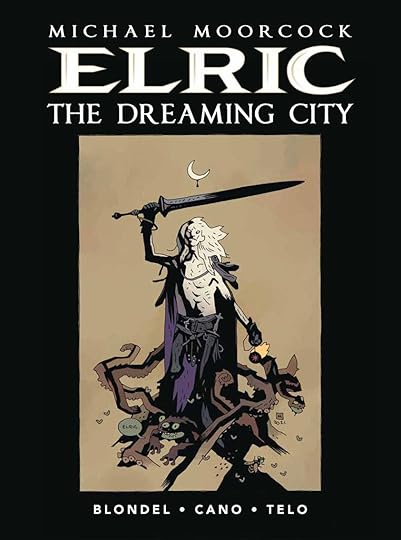 Elric: the Dreaming City is the climactic finale of Titan’s glorious reenvisioning of Michael Moorcock’s timeless fantasy classic. Undertaken by the powerful triumvirate of Julien Blandel, Jean-Luc Cano writing and adapting the novel, and Julien Telo contributing stunningly vivid art. And make no mistake, it is art. The work throughout Elric: the Dreaming City is lush and an absolute joy to look at. The way Elric himself is captured, he looks just the way I’ve always imagined him in my mind. He’s stark and angular and immensely sad, wearing his melancholy like armor. The original story itself is lovingly adapted and brought to gorgeous life through detail-laden visuals. Every page of Elric: the Dreaming City is an absolute feast created to pore over. Despite its relatively short length, the graphic novel feels dense its easy to lose yourself in as you take in the pages. For a lifelong fan of the White Wolf’s stories, it’s incredible to see them brought so fully to life.
Elric: the Dreaming City is the climactic finale of Titan’s glorious reenvisioning of Michael Moorcock’s timeless fantasy classic. Undertaken by the powerful triumvirate of Julien Blandel, Jean-Luc Cano writing and adapting the novel, and Julien Telo contributing stunningly vivid art. And make no mistake, it is art. The work throughout Elric: the Dreaming City is lush and an absolute joy to look at. The way Elric himself is captured, he looks just the way I’ve always imagined him in my mind. He’s stark and angular and immensely sad, wearing his melancholy like armor. The original story itself is lovingly adapted and brought to gorgeous life through detail-laden visuals. Every page of Elric: the Dreaming City is an absolute feast created to pore over. Despite its relatively short length, the graphic novel feels dense its easy to lose yourself in as you take in the pages. For a lifelong fan of the White Wolf’s stories, it’s incredible to see them brought so fully to life.
This adaptation of Elric: the Dreaming City has a particularly cinematic feel to it, the dialogue bent to a suitably melodramatic feel and the art sweeping and making full use of dynamic compositions. It cannot be overstated how much the designs fully capture the spirit of the original stories, with the ancient cities appearing colossal and otherworldly, the Melniboneans wicked and alien, and especially Elric himself and his famous, soul-drinking sword Stormbringer coming to life. For fans of Moorcock’s albino Eternal Champion, this is an adaptation that cannot be missed. Of special interest, at the climax of the book itself, we are given a look at the slumbering dragons of Melnibone awakened in a hideous rage, and I honestly cannot remember the last time I saw dragons as awesome as they are depicted in Elric: the Dreaming City. All in all, it’s an awesome experience and one I can see myself going back to over and over again, much as I have a tendency to do with the stories. It’s a superlative achievement that the entire creative team should be hugely proud of themselves for accomplishing. For any fan of Elric and the fantasy of Moorcock, or anyone looking for a gorgeous and immersive adventure, Elric: the Dreaming City is a five-star experience that shouldn’t be slept on.
Read Elric: The Dreaming City by Michael Moorcock, Julien Blandel, Jean-Luc Cano, and Julien TeloThe post REVIEW: Elric: The Dreaming City by Michael Moorcock, Julien Blandel, Jean-Luc Cano, and Julien Telo appeared first on Grimdark Magazine.
April 12, 2022
REVIEW: Destiny of the Dead by Kel Kade
Destiny of the Dead, Kel Kade’s newest addition to the Shroud of the Prophecy series, aims to beat the hero’s journey trope with a hammer. For the most part, this series, and specifically this story, Destiny of the Dead, is very successful in that aim. But I think as the story progresses, it is settling into some more of the common writing patterns we see in fantasy.
“Aaslo rubbed his chest as he led the odd group of horses and undead toward the chamber where he was most likely going to meet his own death.”
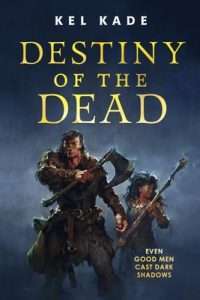 The story picks up directly where we left off in the first book, Fate of the Fallen. Aaslo and his merry band of thieves, prophets, drop-out wizards, and the undead are on the march from one spectacular fight to the next. This book is much more violent than the Fate of the Fallen, and Aaslo starts to come into his powers more thoroughly.
The story picks up directly where we left off in the first book, Fate of the Fallen. Aaslo and his merry band of thieves, prophets, drop-out wizards, and the undead are on the march from one spectacular fight to the next. This book is much more violent than the Fate of the Fallen, and Aaslo starts to come into his powers more thoroughly.
Fate of the Fallen aimed to subvert the chosen one trope, which it did well. However, now in book two, it feels like the story is moving towards a found-family quest-type fantasy. I like how the story is progressing and maturing; I think if Kade kept hammering home how Shroud of the Prophecy was smashing the chosen one trope, it would feel hackneyed. Instead, it balances well.
Plot-wise, much of this story covers the political machinations of various gods and their minions. It is a bubbling brew of characters with different aims working against each other. My only slight qualm with this book is that it can be challenging to follow. There is so much going on that it is hard to latch onto any of the essential side characters. And there is no fluff; all side characters are purposeful to the driving narrative. But there are quite a few, and I got lost in them a few times. However, Aaslo’s group, a found family, if you will, is fantastic. His group is peppered with distinctive voices that I knew and understood and followed.
For instance, Dolt, the weird horse who is more than just a ride, is hilarious. I am convinced that he is the reincarnation of Mathias; that is the sort of energy Dolt brings to the story. Teza is great, as is Mory, Peck, Myra the Reaper, and Ijen the not-so-helpful- Prophet. Ijen gets more fleshed out in this story, as does Myra. We have so much to learn about the two of them. Kade drops some profound tidbits that will be important in the third novel.
Aaslo, our protagonist, is such a refreshing character. Instead of an asshole, the antihero is philosophically an 80-year-old man yelling at folks to get off his lawn. I can picture Aaslo hitting some poor unsuspecting ten-year-old in the ass with a stick for stepping on his begonias. He wants none of this nonsense, but he will put up with it out of duty and love of humanity.
The actual chosen one, Mathias, who was preordained for greatness, resides in a bag that swings from Aslos hip. I love this little bit of macabre that Kade wrote into the story. Not only is the hero dead, but his head hangs from the hip of his best friend, and he talks to Aaslo. Mathias is super dead and an excellent comedic foil for Aaslo so that he might relax a little bit. It doesn’t work, but Mathias tries.
Destiny of the Dead was one of the books I was looking forward to for 2022, and it didn’t let me down. Unique voices, a moving plot, a bit of the macabre, and a unique narrative made this series a lot of fun. I can’t wait for book 3.
Read Destiny of the Dead by Kel Kade
The post REVIEW: Destiny of the Dead by Kel Kade appeared first on Grimdark Magazine.
April 11, 2022
Grimdark Magazine Issue #30 is here!
Amongst all that’s happening in the world, it’s actually just dawned on me that we’ve published our 30th issue of Grimdark Magazine!!! Rewind eight or so years, and I did not think we’d ever get this far down the track. Thousands of ezine issues and anthology copies sold, hundreds of authors, article writers, and interviews published, and well over 1,000 book reviews put out there to help connect the readers and authors of this awesome community. Just mental to think we’d get this far.
With that quick bit of team-based back patting out of the way, let’s get stuck into the grimdark goodness coming your way in Grimdark Magazine Issue #30!
Issue #30 line upOver the years, we’ve been fortunate enough to be trusted by a broad range of authors to publish their work, and this issue is no different. Our TOC for this issue is below:
Bone Armour by Victoria HaywardAn Interview with Kel Kade (Beth Tabler)Sympathy for the Devil: The Evolution of the Villain by Aaron S. JonesState of Oblivion by Kaaron WarrenAn Interview with Mark Lawrence (Beth Tabler)Dances with Devils: Loving the Antihero by Deborah A WolfRoses in Winter by Angela BoordReview: Destiny of the Dead by Kel Kade (Beth Tabler)An Interview with Stephen Blackmoore (Beth Tabler)Hounds by Clayton SnyderCover reveal for Issue #30This quarter I gave Carlos Diaz a different challenge: no killer cyber dogs, soldiers, or ne-er-do-wells. I asked him to depict this dry, brutal, and emotionally haunting scene depicted by Australian Author Kaaron Warren in her story State of Oblivion. As he has with every other cover so far, he’s absolutely smoked this one and produced a cover I love (and if I’m not mistaken, will find itself on the author’s wall soon!).
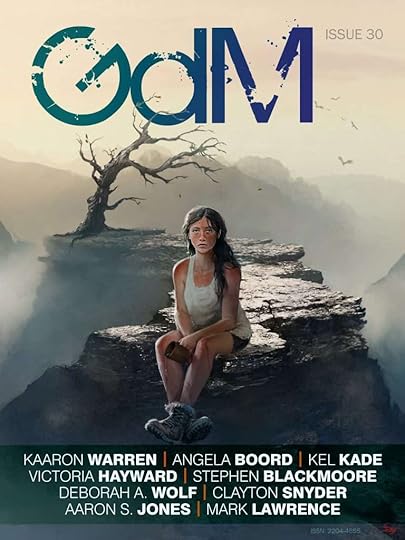
You can also grab this issue in PDF or ePub from our catalogue.
The post Grimdark Magazine Issue #30 is here! appeared first on Grimdark Magazine.
April 9, 2022
REVIEW: Solace Lost by Michael Sliter
The hands of power are shifting in the land of Ardia. Nobles and the criminal underworld are forming and betraying alliances. A war is looming. In this ruthless world, no one can remain innocent nor unscathed. Michael Sliter’s debut novel Solace Lost pays homage to all that defines grimdark.
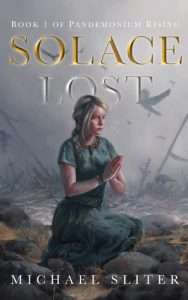 Solace Lost is unapologetically bleak. There are no true comic relief characters. The few scenes of camaraderie are fleeting. Sliter wastes no time in displaying Ardia as squalid and dangerous. It is evident that the streets and government are ruled by the corrupt. He assaults the imagination with vivid imagery of sewer streets and those living in despair. Solace Lost is gritty and tragic, but within its violent depiction resonates the sheer willpower to survive.
Solace Lost is unapologetically bleak. There are no true comic relief characters. The few scenes of camaraderie are fleeting. Sliter wastes no time in displaying Ardia as squalid and dangerous. It is evident that the streets and government are ruled by the corrupt. He assaults the imagination with vivid imagery of sewer streets and those living in despair. Solace Lost is gritty and tragic, but within its violent depiction resonates the sheer willpower to survive.
Solace Lost is told through several perspectives. The first character introduced is Fenrir de Trenton. He works for the criminal organization known as The House. With a bad knee and unusual knack for botching his jobs, he is not your typical “hitman.” Merigold Hinter starts as a naïve youth, working for her father’s inn. She yearns for adventure and romantic love. Her journey is gravely harrowing. While Merigold suffers the most, Sliter wrote her character and plight with care.
While not given as much page time as some of the others, Hafgan Iwan is a phenomenal character. He is a Wasmer, a humanoid species. To assimilate with humans, he shaves his face twice a day, files his teeth, and learns their language. These attempts are near futile. Despite his best efforts, Wasmer are not accepted within the human community. The traditional Wasmer also sneer at those trying to assimilate by giving them a derogatory name the “budredda.” Sliter accurately depicts the struggles of not being accepted and not having a rightful place in society.
While political upheaval is waging in Ardia, Solace Lost primarily focuses on the personal developments of its characters. A good portion of this novel’s beginning is less about the upcoming war, and more about the characters and their intimate struggles. Even after the main events pick up, the most memorable atrocities in the novel are the near invisible battles endured by Sliter’s characters: poverty, sexual abuse, racism, etc.
The magic present in Solace Lost offers only a glimpse of its full capabilities. Since magic is technically outlawed in Ardia, we see magic performed in its rawest form–used by the inexperienced and sometimes recklessly. I’m eager to see how magic manifests later in the series.
Michael Sliter’s debut embraces what I love about grimdark with morally gray characters, a merciless world, and dark themes. Solace Lost is the first in the promising Pandemonium Rising series. I’m eager to read more.
Read Solace Lost by Michael SliterThe post REVIEW: Solace Lost by Michael Sliter appeared first on Grimdark Magazine.
April 5, 2022
REVIEW: Blackbirds by Chuck Wendig
While Miriam Black’s devil-may-care attitude coupled with the wit and ultimate self-destruction would generally appeal to me as a reader, Blackbirds, Chuck Wendig’s uber-popular urban fantasy series, left me flat. Chuck Wendig is a helluva writer if you have read Wanderers or Invasive you know that he has skill in weaving together a story. In Wanderers, Chuck demonstrated his ability to create a plot with a slow burn that comes together with a symphonic crash and Invasive frankly scared the shit out of me.
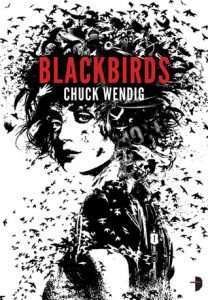 Miriam, the protagonist of Blackbirds is a chain-smoking, talking-like-a-sailor, broken person who has a curse of knowing exactly how a person will die. A curse like this would break anyone and it has Miriam cut off from physical contact and intimacy of any kind. I get that. As soon as I understood her predicament in the first chapter of the book, I understood why Miriam is the way she is. This ability needs skin-on-skin contact, and early in when she first got her curse, Miriam attempts to help people. She tries to step in and thwart what amounts to as the reaper. But she can never help. It is as if she is watching horror movies for every person she comes into contact with. Death will come for who they want, and no one will stop it.
Miriam, the protagonist of Blackbirds is a chain-smoking, talking-like-a-sailor, broken person who has a curse of knowing exactly how a person will die. A curse like this would break anyone and it has Miriam cut off from physical contact and intimacy of any kind. I get that. As soon as I understood her predicament in the first chapter of the book, I understood why Miriam is the way she is. This ability needs skin-on-skin contact, and early in when she first got her curse, Miriam attempts to help people. She tries to step in and thwart what amounts to as the reaper. But she can never help. It is as if she is watching horror movies for every person she comes into contact with. Death will come for who they want, and no one will stop it.
While hopping from city to city in a vagrant lifestyle, stealing as she needs to, she comes upon a truck driver named Louis. Louis is a small beacon of light in the shit-storm that is Miriam’s life. He shows her kindness when he doesn’t have to and generosity when he gets nothing out of it. Miriam touches him, and low and behold, Louis is going to die a horrible death very soon. But the real punch to Miriam’s gut is that she will be standing right there watching him die.
This is a real problem for her.
At the start of the novel, I could not put this book down. I plowed through the chapters. Miriam appealed to me. I enjoyed reading someone who was not so perfect and whose actions did not seem so telegraphed. It is a part of why I enjoy horror and grimdark so much. I like my characters coated in a little grime. But, Blackbirds is written with such an unlikeable character that I could not get into it. Sometimes, unlikeable is excellent. It allows the author a chance for the character to have small redeeming qualities, or at the very least make them not suck so much. I waited for the entire novel for Miriam to have that moment, and it did just not come.
About midway through the novel, and with the addition of a few characters, I could not understand the purpose of Miriam’s wanderings. I found myself wanting Wendig to get to the point. Chapters began to slog. Wendig’s usual frenetic writing style I usually enjoy came in bits and pieces. A murder here, a bit of torture there, all for the sake of not pushing the plot along. I could not tell if Wendig was going for edgy rather than purposeful with the violence. I feel like early chapters in the series are setting up the future novels, which now stand at six. But as an entry point into the novel, it left me a bit confused.
I can see Miriam being a great HBO/Netflix tv show. She reminded me a lot of Jessica Jones. Similar snark, attitude about the world, and general lack of ability to take anyone’s crap. But where Jones was noir, Miriam is horror.
While this did not completely do it for me, and I won’t be continuing the series, I know that it will appeal to many people. It is a beloved series. So give it a swing if you like your urban fantasy with a side of horror; Miriam Black might be your gal.
Read Blackbirds by Chuck WendigThe post REVIEW: Blackbirds by Chuck Wendig appeared first on Grimdark Magazine.
April 3, 2022
REVIEW: All of Us Are Dead
Korean zombie series All of Us Are Dead is yet another example of brilliant television from South Korea. The 12 episodes follow a group of high school students in Hyosan as they fight to survive in a city overwhelmed by zombies.
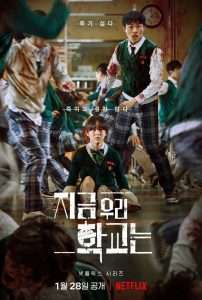 All of Us Are Dead doesn’t attempt to reinvent the wheel. A mysterious science teacher in the school experiments on a rat that bites one of the students and from there, the virus spreads first throughout the school and then throughout the city. The students in the series aren’t oblivious to what is happening. They are aware of zombies and even mention the brilliant Train to Busan. The series works best when it focuses on the relationships between the large cast of characters, something which has been seen from Dawn of the Dead to The Walking Dead. The fast-moving zombies wreak havoc in the school and the grief and despair thrust upon the students draws some together and others apart. The relationship between Cheong-san and On-ra – two long-term friends who have secret feelings for each other – anchors the show. We see how much they care about each other as they struggle through the outbreak and support each other through devastating times. The adults are not forgotten; Cheong-San’s mother fights a desperate battle to get from her restaurant to the school and save her son as the military discuss drastic measures to control the outbreak. Students from different social circles are forced to band together and this creates more friction and more problems for some but also forces some characters together in an effort to see their
All of Us Are Dead doesn’t attempt to reinvent the wheel. A mysterious science teacher in the school experiments on a rat that bites one of the students and from there, the virus spreads first throughout the school and then throughout the city. The students in the series aren’t oblivious to what is happening. They are aware of zombies and even mention the brilliant Train to Busan. The series works best when it focuses on the relationships between the large cast of characters, something which has been seen from Dawn of the Dead to The Walking Dead. The fast-moving zombies wreak havoc in the school and the grief and despair thrust upon the students draws some together and others apart. The relationship between Cheong-san and On-ra – two long-term friends who have secret feelings for each other – anchors the show. We see how much they care about each other as they struggle through the outbreak and support each other through devastating times. The adults are not forgotten; Cheong-San’s mother fights a desperate battle to get from her restaurant to the school and save her son as the military discuss drastic measures to control the outbreak. Students from different social circles are forced to band together and this creates more friction and more problems for some but also forces some characters together in an effort to see their
similarities instead of their differences. The students’ personalities are all fleshed out well over the course of the series with interesting bonds developing including former bully Su-hyeok and his attraction for Nam-ra – the class president with a perfect record. All of Us Are Dead focuses on these relationships so that when the inevitable virus spreads, the loss is felt that much more.
All of Us Are Dead is refreshing in that it links the effect of the virus to a person’s cruelty and will to survive. Bullies such as Gwi-nam survive death multiple times through their sheer will to be cruel whilst others keep a semblance of their humanity to save those they love. It’s an interesting spin on a genre that we all know so well and adds an extra layer to the series. The series shines a lot on the choices that humans make in times of great distress. There are difficult decisions being made throughout the series and it is tough to separate the show from the recent pandemic. Those in power are given options and know that whichever ones they choose, many people will die. Survivor’s guilt becomes a huge point in the series because of this and it is one that All of Us Are Dead handles better than many shows and it has you feeling sympathy for characters who perhaps made choices that you wouldn’t have agreed with.
All of Us Are Dead is a thrilling zombie series full of brutal and violent scenes involving characters who are all so human. Whilst not hitting the heights of the amazing Squid Game, the series is still an excellent piece of television that fans of the zombie genre will devour like the tastiest of brains. Here’s to hoping that there’s a second season!
The post REVIEW: All of Us Are Dead appeared first on Grimdark Magazine.
April 2, 2022
REVIEW: War Games by Anna Mocikat
Behind Blue Eyes: War Games is the third installment of the Behind Blue Eyes series by Anna Mocikat. The Behind Blue Eyes series is a modern neo-cyberpunk novel series that envisions a world dominated by megacorporations that maintain power through the use of death squads of brainwashed cyborgs called Guardian Angels. The protagonist, Nephilim, briefly broke away from her masters in the first books but has since been forced back into the service of her corporate masters.
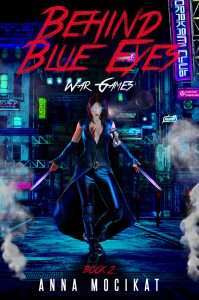 War Games picks up immediately after the events of Fallen Angels. A serial killer is stalking the cybernetically enhanced super soldiers of Olympias City and torturing them before murdering them. The fact this shouldn’t be possible was the mystery of the second book but has now been revealed to be the result of a heinous alliance between the Rosprom Corporation, a traitorous executive, and sold information by Nephilim’s friend, Finwick.
War Games picks up immediately after the events of Fallen Angels. A serial killer is stalking the cybernetically enhanced super soldiers of Olympias City and torturing them before murdering them. The fact this shouldn’t be possible was the mystery of the second book but has now been revealed to be the result of a heinous alliance between the Rosprom Corporation, a traitorous executive, and sold information by Nephilim’s friend, Finwick.
This book expands a great deal on the world-building as we finally meet the board of directors for the Olympias Corporation and they’re every bit the mouth-breathing decadent psychopaths we always suspected them to be. However, their chief opponent is Metatron, a man who has been willing to brainwash his followers into absolute obedience as well as slaughter in their name for decades. The competing corporations aren’t any better either, wanting to annihilate their enemies versus liberate them.
Nephilim remains brainwashed as Metatron continues to try to manipulate her into both falling in love with him as well as supporting his plan to overthrow the board. He’s given her a limited amount of free will but still controlling all of the information she has about her past as well as the events leading up to her initial rebellion. He’s a very well-written villain and full of charisma but it’s impossible to miss how disgusting it is for him to seduce not only one of his subordinates but someone he’s mentally tampered with.
The funny thing is that War Games actually calls into question just how wrong Metatron is about the “redemption” Nephilim sought in the first book. Jake and she fell in love to the point he was willing to betray his country as well as sabotage their attempt to destroy Olympias City. However, when we get scenes from his perspective, we discover he’s perfectly willing to help in the horrific murder of Guardian Angels that Nephilim considers friends. He’s only interested in her and quite possibly every bit as evil as Metatron. It’s an interesting twist and one I wasn’t expecting.
We also get a lengthy story involving Finwick and his adopted daughter, Sarah. He’s done everything to try to provide for her but what he wants to give her, material goods, isn’t something she cares about since she grew up in a hippie commune outside the city. However, Nephilim has warned him that he’s doomed to be hunted by Metatron no matter where he goes so he has to seek out a new identity again. Unfortunately, the price has gone way-way up. I really liked this storyline and never thought Finwick would become my favorite character in the story.
In conclusion, this is an excellent follow up to the previous book and the series functions as an almost continuous narrative from one volume to the next. Unfortunately, this does mean that the book ends on a cliffhanger and a lot of existing plots aren’t resolved. Still, I think if you liked the previous two books then you will love this.
Read War Games by Anna MocikatThe post REVIEW: War Games by Anna Mocikat appeared first on Grimdark Magazine.



